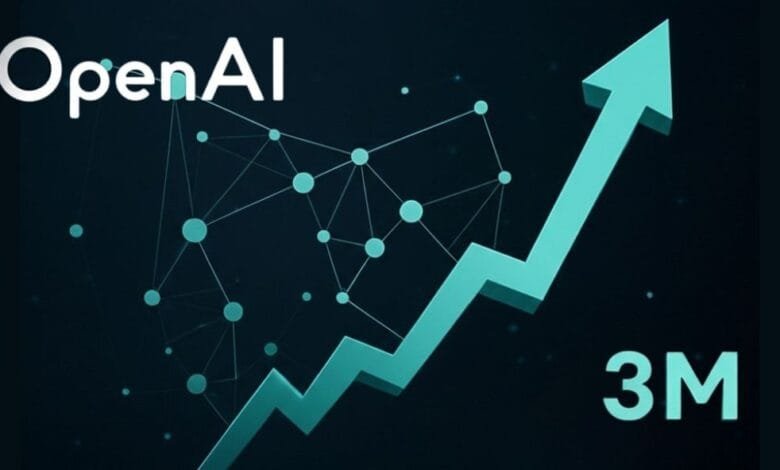OpenAI Hits 3M Business Users, Unveils New Workplace Tools

▼ Summary
– OpenAI’s business user base grew 50% since February, reaching 3 million paying enterprise customers, as it launched new workplace tools to compete with Microsoft.
– The company introduced business-focused features like ChatGPT connectors, Record Mode for meetings, and enhanced Deep Research and Codex coding tools to boost productivity.
– OpenAI faces competition from Microsoft and Google but differentiates itself by offering direct access to state-of-the-art AI models and enterprise-grade security.
– Data security and privacy concerns remain hurdles for enterprise adoption, despite OpenAI’s assurances about not training on business data.
– OpenAI’s enterprise success is driven by advanced AI capabilities, but challenges like talent retention and governance issues threaten its momentum.
OpenAI has reached a major milestone with 3 million business users, marking a 50% growth since February as the company rolls out powerful new workplace tools. The AI leader is making significant strides in the enterprise market, introducing innovative features that challenge established players like Microsoft and Google in the corporate AI space.
The latest offerings include advanced connectors that seamlessly integrate ChatGPT with popular business platforms such as Dropbox, SharePoint, and Google Drive. These tools eliminate the need to switch between applications, streamlining workflows and boosting productivity. Another key addition is Record Mode, an AI-powered meeting transcription feature that automatically summarizes discussions and generates action items—a direct competitor to services like Otter.ai.
Deep Research, one of OpenAI’s standout tools, now integrates with HubSpot, Linear, and Microsoft and Google products, allowing businesses to synthesize internal data with external research for comprehensive insights. Meanwhile, Codex, the company’s AI-powered coding assistant, has been upgraded with the latest codex-1 model, enabling developers to write, debug, and optimize code in secure cloud environments.
Security remains a critical concern for enterprises adopting AI solutions. OpenAI emphasizes its enterprise-grade security measures, assuring customers that their data is never used to train models. However, skepticism persists among IT leaders, particularly after recent industry-wide AI security incidents. The company points to its published security documentation as proof of its commitment to safeguarding sensitive business information.
Sam Altman, OpenAI’s CEO, has shifted his stance on AI adoption, now urging businesses to embrace the technology rather than wait on the sidelines. Speaking at the Snowflake Summit, he highlighted how early adopters are gaining a competitive edge. This marks a notable change from his previous cautious recommendations, reflecting AI’s rapid maturity in enterprise applications.
Despite its momentum, OpenAI faces challenges, including intensifying competition from Microsoft, Google, and AI startups like Anthropic. The company is also grappling with talent retention, as engineers increasingly move to rivals offering greater autonomy and research freedom. Additionally, OpenAI’s unconventional governance structure—still under scrutiny after last year’s leadership upheaval—raises questions about long-term stability.
Technical advancements remain OpenAI’s strongest asset. Deep Research has achieved record-breaking performance on expert-level benchmarks, while Codex demonstrates remarkable accuracy in automating complex coding tasks. These capabilities give the company a clear advantage in enterprise markets, where businesses prioritize cutting-edge AI solutions.
With AI adoption accelerating faster than any previous technology, OpenAI’s 3 million business users signal a turning point in corporate AI integration. The company’s ability to maintain its lead will depend on balancing innovation with security, governance, and talent retention—key factors as the AI landscape grows increasingly competitive. This milestone isn’t just about growth—it’s a sign that AI is becoming indispensable in the modern workplace.
(Source: VentureBeat)

